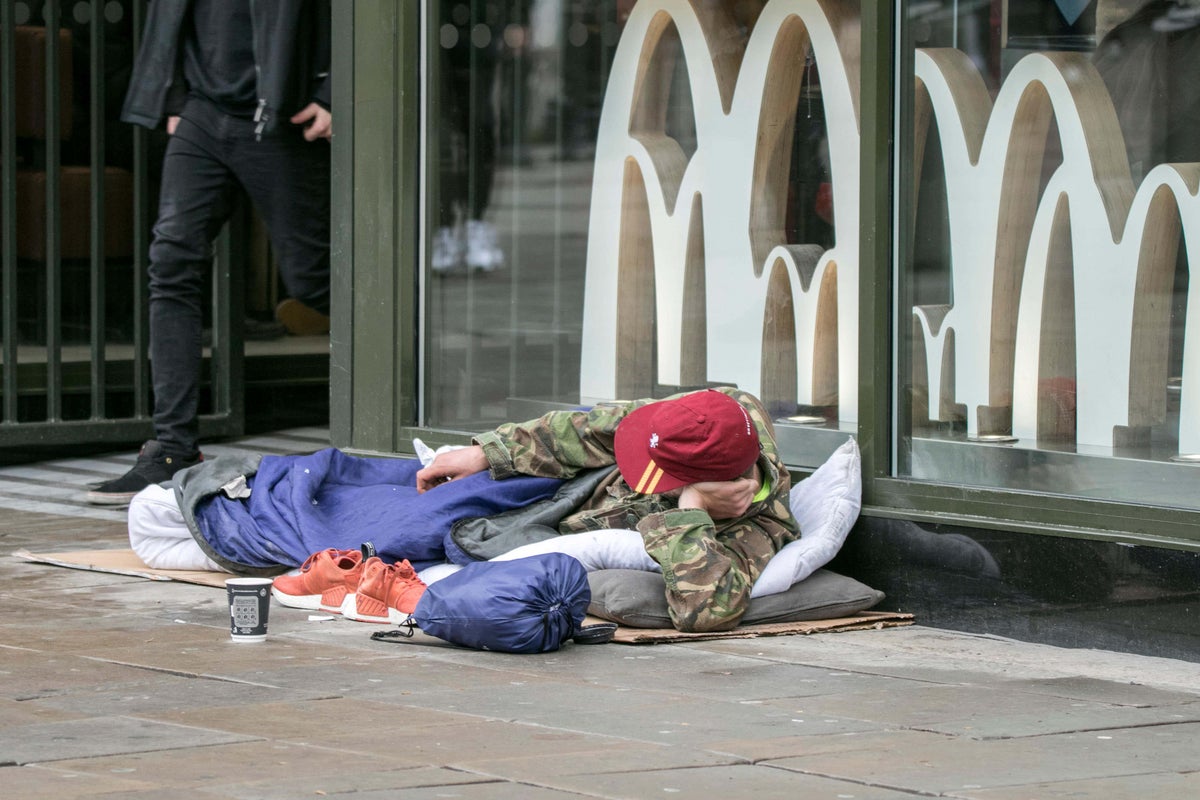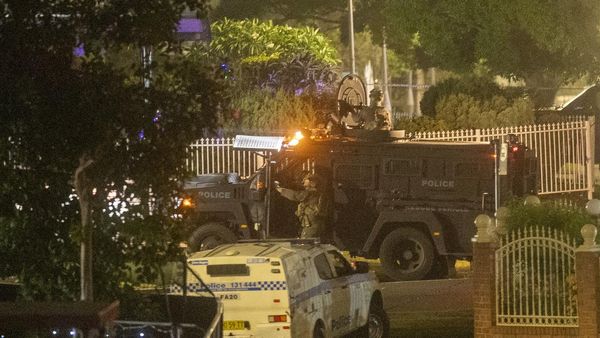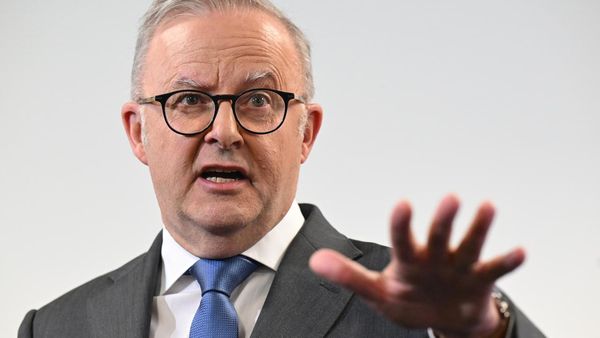
The number of people seen sleeping rough in London has risen by more than a fifth in the past year in what has been branded a “tragic reflection” of both the cost-of-living crisis and a lack of affordable housing.
People sleeping rough for the first time increased by more than a quarter, the latest figures showed.
A total of 10,053 people were seen sleeping on the streets between April 2022 and March 2023, according to the Combined Homelessness and Information Network (Chain) report, which is commissioned and funded by the Greater London Authority (GLA).
This figure was up by 21% from 8,329 in the same period a year previously.
The latest statistics came just a day after the Prince of Wales announced the first of the flagship areas where he hopes to end homelessness with his new Homewards project.
William said he was “excited” to be launching the five-year initiative, with the London borough of Lambeth among six locations where new partnerships will be forged between councils, businesses, charities and individuals aiming to make homelessness something that is rare, brief and unrepeated.
The legal definition of homelessness is that a household has no home available and reasonable to occupy.
Rough sleeping is one kind of homelessness, with other situations including someone in temporary accommodation, living in inadequate housing, or staying with family and friends in what is known as sofa-surfing.
While the 10,053 people seen sleeping rough in London in 2022/23 represents a jump of 21% year-on-year, it is still below the recent peak of 11,018 in 2020/21.
Of the total sleeping rough in the latest year, 6,391 were doing so for the first time, the Chain report says.
This was a 26% rise compared with 5,091 from the same period in 2021/22.
Some 2,084 people had been seen rough sleeping for at least two consecutive years.
After more than a year without sleeping rough, 1,578 people returned to the streets. The number of people in this situation increased by almost a third (31%) from 1,205 the previous year.
Homelessness charity St Mungo’s called on the Government to increase housing benefit “so it properly reflects the true cost of renting”.
Its chief executive, Emma Haddad, said: “The 21% increase in the number of people experiencing street homelessness in London is a tragic reflection of the impact of the cost-of-living crisis and the severe lack of affordable housing.
“The shrinking supply of affordable homes in the private rented sector, and the chronic undersupply of social housing, means people are struggling to find and keep somewhere to live.”
She added that without “immediate intervention the number of people sleeping rough will continue to rise”.
Earlier in June homelessness charities wrote to Prime Minister Rishi Sunak to express their deep concern that the Government will fail to meet its target of ending rough sleeping in England by 2024.
In September, the Government published its Ending Rough Sleeping For Good strategy, which restated its 2019 manifesto commitment to end rough sleeping by the end of this parliament.
London Mayor Sadiq Khan described the rise in people sleeping rough on London’s streets as “extremely alarming” and said that despite previous progress “extraordinary financial pressures are putting the poorest Londoners at growing risk of homelessness”.
He said ministers must “get a grip on the cost-of-living crisis and restore the social security safety net which stops people becoming trapped in a cycle of homelessness”.
We need the Government to urgently invest in housing benefit, deliver the genuinely affordable homes we desperately need and fund support services to ensure we can end people’s homelessness for good— Matt Downie, Crisis chief executive
He added: “They must also invest in new council and genuinely affordable homes and restore London Housing Allowance rates to the 30th percentile of market rents. Ministers should also give me the power to introduce a system of rent controls that work for London.”
Rick Henderson, chief executive of Homeless Link, said the 21% rise was “categorically terrible”.
He said: “To turn the tide of rough sleeping, it is vital that the Government unfreezes the Local Housing Allowance so that housing benefit covers at least the lowest third of rents in the capital. They must also commit to build enough social housing to ensure everyone has access to a good quality and genuinely affordable home.
“We remain deeply concerned about the financial position of homelessness services across the country, with many telling us they have scaled back to cut costs. The Government must act now, granting a funding uplift for homelessness support, in line with inflation, to prevent services from closing altogether. If it does not, we risk leaving people without safe and trusted support and accommodation providers to turn to, and many of those already housed facing the trauma of returning to the streets.”
Matt Downie, Crisis chief executive, branded the figures “incredibly tragic” and said they should “serve as a wake-up call for the Government” which it said appears to have “frankly no hope” of hitting the target to end rough sleeping.
He said: “We need the Government to urgently invest in housing benefit, deliver the genuinely affordable homes we desperately need and fund support services to ensure we can end people’s homelessness for good. Only by addressing the root causes driving people into homelessness in the first place, can we ensure that no-one has to face life on the streets.”
Riverside, which describes itself as the largest provider of accommodation for people affected by homelessness, said “everyone should be concerned by this significant increase” in rough sleeping.
Lee Buss-Blair, its director of operations, said: “The Government now has 18 months to make good on its manifesto pledge of ending rough sleeping in this parliament.
“Ending rough sleeping doesn’t just mean directing more resources at rough sleeping but also looking at the factors driving the increase in rough sleeping, which are only going to intensify as the cost-of-living crisis continues.
“This includes a chronic lack of social housing and the need for much more support for providers of supported housing.”







